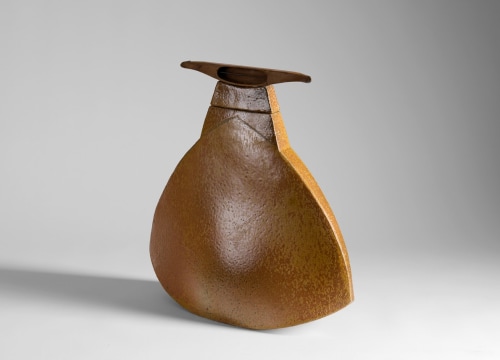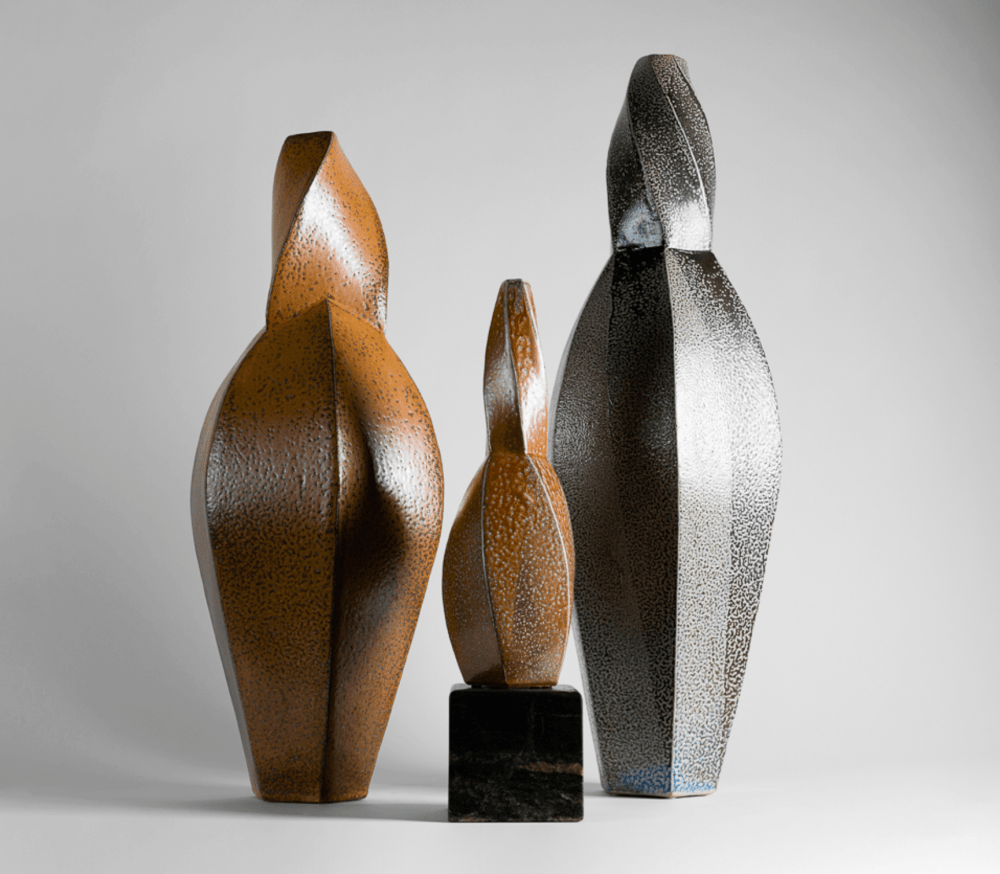

Since commencing his studio practice in the 1960s, Aage Birck has become well known for his stoneware sculptures and site-specific public commissions. Pushing his exploration of glazes and firing methods, the Danish artist has created a diverse and expansive body of work—one that is, nevertheless, united by a strong aesthetic distinctive in the field of Danish ceramics, and recognizable the world over.
Birck, who is an avid collector of objects, as well as a perennial student of craft (not merely of his own, but the craft movements of other cultures), brings his passions to bear on his practice—and it is, perhaps, these twin influences which serve most clearly as a thread connecting his work of decades.
An interest in eastern ceramic traditions, for instance, has led him to experiment with iron and salt glazes particular to oriental antiquity. He has employed these frequently ever since, using them to build up layers which he then “slaps into multi edged forms.” Exercising his expert control over form, he creates vases which twist and narrow as they rise, appearing, depending on the angle from which they are viewed, either to have “perfect balance” or “a disturbing crookedness”
In another mode, Birck keys his attention on the unglazed ceramic. He combines his clay with found fragments, either of corroded iron, or of stamped road signs. Firing these in a saggar, he gives his pieces a sought-after “burned out character,” his characteristically straight lines and sharp edges endowing the works with an “architectonical mark.”
In one of his most recognizable series, Birck seems to unite his interest in craft tradition with his consuming yen for collecting. He incorporates tools into these sculptures—combs, folders, or looms for example—his abiding aim to achieve a “perfect balance between the chosen object and the ceramic form,” never forgetting the “special expression of the salt glaze” of each.
Since 1966, Aage Birck has exhibited extensively throughout Europe, but in North America as well, notably as a part of the traveling exhibition From the Kilns of Denmark, which premiered in New York at the Museum of Contemporary Arts and Design (now the Museum of Arts and Design) in the fall of 2002. His works are found in museums and public collections throughout Scandinavia, Germany, and the UK. From 1987 to 1998 he taught at the Kolding School of Arts and Crafts (now the Design School Kolding).
